CPE Announces the 2018 Executives of the Year
Now in its 22nd year, the CPE Executive of the Year Awards program is adjudicated by a peer vote among leading executives from across the commercial real estate industry and based on accomplishments in the past year. Here's what made the winners stand out.

The editors of Commercial Property Executive are delighted to present the winners of the 22nd annual CPE Executive of the Year Awards, a program that recognizes commercial real estate’s top achievers in all of the industry’s main business lines, from investment and development to finance and advisory services. Awarded in two categories—first place and honorable mention—winners were chosen by a confidential vote of their peers among our volunteer advisory board of industry leaders.
We congratulate all of the distinguished executives who led their firms against a backdrop of relentless change in 2018, including increased use of technology in operations and transactions, the emergence of the gig economy, shifts in office consumption and function, and the morphing of demographics to include, simultaneously, significantly larger numbers of college students and people hitting 65. A flattening yield curve, tax reform, Brexit and the possibility of U.S. trade tariffs also fueled the need for savvy executives who are agile and quick to adapt.
This list showcases the top executives of 2018, who have been singled out by peers, clients and employees for outstanding performances that have resulted in historic developments, landmark deals and record-breaking transactions. Not only do these women and men serve their shareholders and investors through vision and leadership but they give back to the communities where they do business through their commitments to sustainability, affordable housing preservation, workplace inclusivity and local charities.
Read about the latest accomplishments of each of the first place winners.
Read about the latest accomplishments of each of the honorable mentions.
Executive of the Year
FIRST PLACE:
Brian Kingston
Senior Managing Partner, Brookfield Property Group, and CEO, Brookfield Property Partner
Chief Strategist: Kingston has been with New York- and Toronto-based Brookfield for 17 years and has been CEO for three. Prior to his current roles, Kingston was CEO of Brookfield Office Properties Australia, CEO of Prime Infrastructure and CFO of Multiplex.
Brookfield by the Numbers: Brookfield Property Group has 285 investment professionals,17,000 operating employees and 30 offices in the U.S., Canada, Brazil, the U.K. and Europe, and Asia-Pacific. Brookfield Property Group has approximately $171 billion in total real estate assets under management and is the real estate arm of Brookfield Asset Management, an alternative asset manager with more than $330 billion in assets under management.
Mega Acquisitions: Brookfield completed the acquisition of GGP for $15 billion at the end of August while also introducing its new listed U.S. REIT: Brookfield Property REIT Inc. A second blockbuster deal closed in early December with a Brookield real estate fund acquiring Forest City Realty Trust for $6.8 billion.
Strategic Dispositions: Concurrent with the closing of the GGP transaction, Brookfield sold $4.2 billion of equity in retail centers to joint-venture partners. It plans to raise as much as $2.5 billion from this portfolio over the next 18 to 24 months to further offset the GGP deal. Other sales included two fully leased Canadian office assets for C$450 million (about $342 million): Queen’s Quay Terminal in Toronto and Jean Edmonds Towers in Ottawa. And it recently disposed of its North American and European industrial business, IDI Gazeley, generating a $1.3 billion return on an original investment of $400 million.
Multifamily Growth: Brookfield’s multifamily portfolio, which is New York-centric, has grown with the recent delivery of 844-unit The Eugene at Manhattan West and 359-unit One Blue Slip in Greenpoint, Brooklyn, both luxury rental towers. It also acquired interests in Waterside Plaza, a four-tower, 1,471-unit residential complex on Manhattan’s East Side, as well as a mixed-use development site in the Bronx where it will develop a seven-tower, 1,300-unit waterfront development. In London, Brookfield has 2,500 apartments under development, including 1,100 rental units.
Core Office: FFO in the third quarter rose 8 percent over last year to $136 million, driven primarily by leasing activity in downtown New York and Washington, D.C. Total occupancy climbed 20 basis points over the same period to 92.9 percent on 2.2 million square feet of leasing. Brookfield launched the third and final phase of the Bay Adelaide Centre in Toronto. Bay Adelaide North will be anchored by Scotiabank, which is taking 420,000 square feet, or half the building.
Retail Redux: With nearly 10 million square feet of leasing executed or committed through third quarter 2018, Brookfield reports that leasing by non-traditional tenants, like Life Time Fitness, has not abated, while internet-only businesses, such as Wayfair and Warby Parker, continue to open physical stores. Space previously occupied by department stores is still being repositioned for live, work and play uses: cinemas, restaurants, entertainment venues, residential and hotels. The legacy GGP portfolio ended the quarter 95.6 percent leased. —Sibley Fleming
HONORABLE MENTION:
Debra Cafaro
Chairman & CEO, Ventas Inc.
Top CEO: Cafaro is credited with raising Ventas Inc.’s market cap from $200 million in 1999 to $26 billion at its peak. She became chair of the Real Estate Roundtable for the fiscal year beginning July 1, 2018. In October, she was one of three women named to the Harvard Business Review’s Top 100 Best Performing CEOs—her fifth consecutive year on the list. Prior to Ventas, she was president and a director of Ambassador Apartments Inc. Before real estate, she had a career in law.
Healthy Growth: Ventas Inc. is an S&P 500 company and REIT that owns more than 1,200 healthcare, life science and senior living properties in North America and the United Kingdom and is a leading capital provider for major care providers and research institutions. The company’s compound annual total shareholder return has exceeded 22 percent since Jan. 1, 2000. Accomplishments in 2018 included investing $400 million in university-based development and acquisitions with Wexford Science + Technology, extending leases with Brookdale Senior Living out to 2026, recapitalizing Atria Senior Living, establishing a senior housing relationship with newly formed Eclipse Senior Living, and acquiring a senior housing community in the Battery Park City area of downtown Manhattan. —Therese Fitzgerald
Daryl Carter
Chairman & CEO, Avanath Capital Management
Workforce Champion: Carter founded Avanath Capital Management LLC, a California-based multifamily investor, in 2008. Previously, he was an executive managing director with Centerline Capital Group., which purchased Capri Capital Finance in 2005. He co-founded and served as co-chairman of the Capri Capital family of companies. Prior to Capri, Carter was regional vice president at Westinghouse Credit Corp. and a second vice president at Continental Bank.
The Properties: Specializing in buying, adding value to and operating affordable and workforce housing, Avanath is an SEC-registered investment advisor and an institutional fund manager. The company has acquired $1.5 billion in properties (comprising 8,000 apartment units) in 12 U.S. states since 2009. In January of this year, the company announced the closing of both Avanath Affordable Housing III fund and the Avanath III NY Co-Investment fund. The funds represent $388 million in equity commitments from 19 investors, including three pension funds, three foundations, four U.S. companies, four U.S. banks, four U.S. family offices and one European family office. Acquisitions for the third round of funds include affordable communities in Chicago, Prince George County, Md., and Morris County, N.J. —Therese Fitzgerald
Lifetime Achievement
Larry Silverstein
Owner, Silverstein Properties
Larry Silverstein was born May 30, 1931, 29 days after President Herbert Hoover pressed a button at the White House and lit all 102 stories of the Empire State Building in New York City. Eighteen months after the stock market crashed, with millions hungry and out of work, the opening of the tallest building in the world was a cause for national pride and celebration.
Silverstein’s family lived, as he tells it, on the “seventh floor of a six-story walkup” in Brooklyn. Silverstein, 87, vividly recalls dragging blocks of ice for the icebox up all six stories. “Making it through those times was pretty tough, and it taught you the facts of a dollar and the importance of not squandering but saving once you made something,” Silverstein said. “It was a time of great learning. There was so little available, and so much to do, and so little with which to do it all.”
Despite hardships and lack of opportunity or capital, Harry G. Silverstein taught his son three lessons that would prove priceless for his future: “Treat everybody with absolute respect. Treat your elders with great sensitivity because they were your elders. They’ve lived longer. They’ve been around more. And become a good listener and hear what people have to say.”
Harry Silverstein was earning a precarious living by leasing Lower Manhattan loft space to rag-and-remnant traders in the garment business. “The commissions were few and far between. Very often, he had to share them with other brokers,” Silverstein recalled. “Life was very difficult, and it became obvious to me that, as brokers, we could not really make a decent living.”
By that time, 1956, Silverstein had married, and he and his wife, Klara, wanted to start a family. The couple relied on Klara’s teaching salary to pay the bills while he earned an undergraduate degree from New York University and, later, attended Brooklyn Law School. “I realized we had to change what we were doing as brokers and do something that was more advantageous, where you could make a better living—and that was to become an owner,” Silverstein told his father.
Harry Silverstein challenged that idea, saying: “We have no capital. We have no money. We have no resources. How are we supposed to become an owner?”
“At that time,” Larry Silverstein said, “there were two people in New York who had just acquired the Empire State Building: a gentleman by the name of Lawrence Wien and another by the name of Harry Helmsley. And they acquired the Empire State Building by going out and offering 5,000 investors an opportunity to become a limited partner in the ownership of the Empire State Building. They put it together with small amounts of capital—I think $5,000 each (share) with which they would acquire the building. It was the most amazing thing. I looked at that, and I said to myself and to my father: ‘If they can do that with their capital, why can’t we?’”
Silverstein says his father looked at him and asked, “You can figure it out?” I replied, “I sure as hell will try.”
In 1957, with his father and brother-in-law, Bernard Mendik (who would later strike out on his own), Silverstein established Harry G. Silverstein & Sons (later Silverstein Properties). The firm bought its first property, a Manhattan industrial loft building on E. 23rd St., with, as Larry Silverstein envisioned, a small group of 20 investors, each contributing $10,000 to the deal. “With that we bought our first piece of real estate, without knowing much of what to do or how to do it—it was really trial and error,” Silverstein said. “We somehow managed, incredulously, to succeed.”
The fledging investors achieved higher rents than anticipated, allowing them to refinance the building and return the money to their investors while still retaining ownership. The first piece of real estate led to a second, then a third and a fourth. “Finally, the banks, which would never lend us anything because we had no assets against which to lend—we had no collateral—agreed to give us whatever we needed in order to buy larger buildings,” the mogul recalled.
With financial backing, the company was able to acquire and renovate larger buildings, and ultimately, to construct them. “So it was a sea-change in our lives as a result,” Silverstein said. “The rest is history.”
By 1978, the company’s portfolio encompassed 4 million square feet of commercial space, including 521, 530, 689 and 711 Fifth Ave.; 44 Wall St.; and a shopping center in Stamford, Conn.
Two years later, Silverstein Properties was in the position to bid on the construction of the 47-story 7 World Trade Center, which was completed in 1986. The company leased the entire building to one tenant, Drexel Burnham Lambert, for $3 billion over a term of 30 years.
“And then, of course, 9/11 happened,” Silverstein said. “The building was the last one to come down on 9/11, and in terms of rebuilding the Trade Center, the first to go back up after 9/11. We finished it in ’06.”
The new 52-story, 1.7 million-square-foot 7 World Trade Center is almost fully leased to tenants that include Moody’s, the New York Academy of Sciences, MSCI and WilmerHale. 7 World Trade became the precursor to Tower 4, Tower 3, Tower 1, the Oculus, Liberty Park and the National September 11 Memorial Museum. The 80-story 3 World Trade Center opened in June 2018. Two buildings, slated for completion in 2022, remain unfinished at the site: the $400 million, 1,200-seat Ronald O. Perelman Performing Arts Center and the $4 billion-plus 2 World Trade Center.
Silverstein, whose office on the 38th floor of 7 World Trade Center overlooks his empire below, demurs that, once the entire Trade Center is finished, he’ll have to find something else to do with his time.
For now, he’s plenty busy. Shortly after 3 World Trade Center opened, Silverstein announced a new business segment to provide commercial real estate financing, particularly construction loans. The new endeavor, Silverstein Capital Partners, is headed by industry veteran Michael May, founder & COO of Cantor Commercial Real Estate, where he led the origination of more than $50 billion in commercial real estate loans.
Clearly, Larry Silverstein’s real estate story is not over yet. Even so, it is unlikely that anything to come could remotely match the intensity and public scrutiny of the 22-year rebuilding of the World Trade Center. As a result, it is this “unanticipated” sliver of a life brilliantly lived that Silverstein is in the process of capturing in a new book that will stand as a guide for future public-private ventures. The book’s release is set to coincide with the opening of Tower 2 in the World Trade Center complex.
“I found myself in the middle of 10,000 issues and complexities, the emotions of which could tax anybody, We had it all, and it became a real fascination. I figured that was enough to talk about.” —Sibley Fleming
Investor of the Year
FIRST PLACE:
Brian Kingston
Senior Managing Partner, Brookfield Property Group, and CEO, Brookfield Property Partners
Chief Strategist: Kingston has been with New York- and Toronto-based Brookfield for 17 years and has been CEO for three. Prior to his current roles, Kingston was CEO of Brookfield Office Properties Australia, CEO of Prime Infrastructure and CFO of Multiplex.
Brookfield by the Numbers: Brookfield Property Group has 285 investment professionals,17,000 operating employees and 30 offices in the U.S., Canada, Brazil, the U.K. and Europe, and Asia-Pacific. Brookfield Property Group has approximately $171 billion in total real estate assets under management and is the real estate arm of Brookfield Asset Management, an alternative asset manager with more than $330 billion in assets under management.
Mega Acquisitions: Brookfield completed the acquisition of GGP for $15 billion at the end of August while also introducing its new listed U.S. REIT: Brookfield Property REIT Inc. A second blockbuster deal closed in early December with a Brookield real estate fund acquiring Forest City Realty Trust for $6.8 billion.
Strategic Dispositions: Concurrent with the closing of the GGP transaction, Brookfield sold $4.2 billion of equity in retail centers to joint-venture partners. It plans to raise as much as $2.5 billion from this portfolio over the next 18 to 24 months to further offset the GGP deal. Other sales included two fully leased Canadian office assets for C$450 million (about $342 million): Queen’s Quay Terminal in Toronto and Jean Edmonds Towers in Ottawa. And it recently disposed of its North American and European industrial business, IDI Gazeley, generating a $1.3 billion return on an original investment of $400 million.
Multifamily Growth: Brookfield’s multifamily portfolio, which is New York-centric, has grown with the recent delivery of 844-unit The Eugene at Manhattan West and 359-unit One Blue Slip in Greenpoint, Brooklyn, both luxury rental towers. It also acquired interests in Waterside Plaza, a four-tower, 1,471-unit residential complex on Manhattan’s East Side, as well as a mixed-use development site in the Bronx where it will develop a seven-tower, 1,300-unit waterfront development. In London, Brookfield has 2,500 apartments under development, including 1,100 rental units.
Core Office: FFO in the third quarter rose 8 percent over last year to $136 million, driven primarily by leasing activity in downtown New York and Washington, D.C. Total occupancy climbed 20 basis points over the same period to 92.9 percent on 2.2 million square feet of leasing. Brookfield launched the third and final phase of the Bay Adelaide Centre in Toronto. Bay Adelaide North will be anchored by Scotiabank, which is taking 420,000 square feet, or half the building.
Retail Redux: With nearly 10 million square feet of leasing executed or committed through third quarter 2018, Brookfield reports that leasing by non-traditional tenants, like Life Time Fitness, has not abated, while internet-only businesses, such as Wayfair and Warby Parker, continue to open physical stores. Space previously occupied by department stores is still being repositioned for live, work and play uses: cinemas, restaurants, entertainment venues, residential and hotels. The legacy GGP portfolio ended the quarter 95.6 percent leased. —Sibley Fleming
HONORABLE MENTION:
David Gilbert
CEO & Chief Investment Officer, Clarion Partners
Big Shoes: In 2017, Gilbert assumed the CEO role formerly held by co-founder Steve Furnary. He is also a member of the firm’s executive board and chairman of the investment committee. He is a member of the board of directors for Clarion Partners Holdings LLC and a member of the executive board for Clarion Partners Management. He joined Clarion in 2007 and began working in the real estate industry in 1983 at Salomon Brothers.
Lion’s share: With $48.6 billion in assets under management, Clarion Partners is an SEC-registered investment advisor and No. 1 on CPE’s list of the Top 50 Commercial Property Owners. Clarion offers equity and debt strategies in office, retail, industrial, multifamily, residential and hotel properties. While Clarion is active nationally in all property types, particularly noteworthy in 2018 was its industrial real estate transactions. For example, Clarion broke ground on a 757,900-square-foot warehouse in Shorewood, Ill., with HSA Commercial Real Estate and Phase II of Fallbrook Pines Business Park in Houston with Trammell Crow Co. Clarion announced plans to develop 652,696 square feet of warehouse space in Ocoee, Fla., and purchased a 3.8 million-square-foot, four-state industrial portfolio from The Pauls Corp. in what equated to the Denver market’s single largest industrial transaction on record. —Therese Fitzgerald
Richard Saltzman
Chairman, Colony Credit Real Estate & Northstar Realty Europe
Transitioning: Saltzman was president, CEO & director of Colony Capital Inc. until November 2018. That’s when Colony founder Tom Barrack stepped back into the CEO role that he gave up when his major private equity firm went public in 2014. In addition to helping take Colony Capital LLC and Colony Financial public as Colony Capital Inc., Saltzman oversaw the company’s merger with NorthStar Realty Finance and Northstar Asset Management in 2017. While his two current roles with Colony are non-executive, he is still a major shareholder in Colony Capital Inc. He joined Colony Capital LLC in 2003. Previously, he spent 24 years at Merrill Lynch, 11 years as the group head for real estate investment banking.
Bullish on Industrial: Colony Capital Inc.—which specializes in healthcare, hospitality and industrial—raised $5.2 billion in third-party capital from institutional clients through the third quarter of 2018. While Barrack has been vocal about Colony’s frustrations with its nursing home properties, the company showed a real penchant for industrial in 2018. Colony Industrial, the company’s light industrial arm, acquired 5.3 million square feet in Atlanta, San Antonio; Jacksonville, Fla.; San Leandro, Calif.; Las Vegas; Northern New Jersey; and Baltimore. Earlier in the year, the company completed its sale of global real estate investment manager and advisor The Townsend Group to Aon plc. —Therese Fitzgerald
Developer of the Year
FIRST PLACE:
Jeff Blau
CEO, The Related Cos.
Developer’s Developer: For the past quarter century, Blau has directed and overseen new developments worth more than $20 billion in almost every sector of the real estate industry. He joined privately held Related, based in New York City, in 1989 as an analyst and rose to associate and then vice president. In 2000, he became president, and in 2012, he took over the CEO spot from founder Stephen Ross.
The Numbers: Related has more than $50 billion in assets owned or under development, with offices and major developments in Boston, Chicago, Los Angeles, San Francisco, South Florida, Washington, D.C., Abu Dhabi and London and more than 3,500 employees.
Topping Out: In July, Related and Oxford Properties Group announced that 30 Hudson Yards, the second-tallest building in New York City, topped out at 1,296 feet. The 90-story, Kohn Pedersen Fox-designed office tower is part of Hudson Yards, an entirely new neighborhood bringing more than 18 million square feet of mixed-use development to Manhattan’s West Side. The observation deck will be the highest outdoor observation deck in the Western Hemisphere, rising more than 1,100 feet in the air and extending 65 feet from the building. Tenants in the 2.6 million-square-foot LEED Gold skyscraper include Kohlberg, Kravis & Roberts; WarnerMedia and its subsidiaries CNN, HBO, Warner Bros. and Turner; and Wells Fargo Securities.
Grand Financing: In November 2018, Related closed on $630 million in construction financing with Deutsche Bank for its massive The Grand project in downtown Los Angeles. The $1 billion complex, designed by architect Frank Gehry and being developed in partnership with CORE USA, is slated for completion in late 2021.
Luxury Senior Housing: Related entered into a new joint venture with Atria Senior Living to develop, own and operate more than $3 billion of modern, urban communities catering to seniors looking to live in major cities. The initial development pipeline includes sites in New York City, San Francisco, Boston, Los Angeles, Miami and Washington, D.C., among others. “Our new focus on senior living represents a culmination of our efforts and now means that Related can offer best-in-class housing options for every stage of life,” Blau stated.
Preserving Affordability: The company acquired 7,837 affordable housing units from Apartment Investment and Management Co. for $590 million, making Related one of the nation’s largest affordable preservationists.
Community Service: NAIOP Massachusetts selected Related Beal to receive its 2018 Distinguished Real Estate Award for achievements in real estate, charitable activities and community betterment, calling it a “driving force in Boston’s real estate market, transforming historic neighborhoods and reshaping key sections of the city, including North Station, Beacon Hill, Post Office Square, South End, Kenmore Square and the Seaport District.” Among its standout achievements, Related Beal developed The Beverly, Boston’s first 100 percent workforce and affordable housing development in 25 years, and revitalized the city’s historic Lovejoy Wharf with new luxury waterfront condominiums. —Sibley Fleming
HONORABLE MENTION:
Jeffrey Hines
President & CEO, Hines
Next Generation: A co-owner of the company formed by dad Gerald, Hines leads the company’s executive committee, chairs its steering committee, sits on the firm’s global investment committee and oversees all of the firm’s policies, procedures and day-to-day operations. He became president in 1990 and has led the development of the firm’s domestic and international acquisition program. He currently oversees a portfolio of $116 billion in assets under management.
Completions & Purchases: Hines commenced a number of impressive projects in 2018. In New York City, Hines and Welltower broke ground on Sunrise at E. 56th Street, which represents Hines’ entry into senior living. In downtown Houston, Hines and Ivanhoe Cambridge announced they will build a 47-story “next-generation” office development designed by Pelli Clarke Pelli. And in downtown Chicago, Hines announced the launch of Salesforce Tower Chicago, the third phase of the Wolf Point master plan—a three-phase development designed by Pelli Clarke Pelli—located on one of the last remaining downtown riverfront sites. Hines is developing Salesforce Tower Chicago in partnership with longtime land owner the Joseph P. Kennedy Family. —Therese Fitzgerald
David Weinreb
CEO & Member of the Board of Directors, Howard Hughes Corp.
Master Developer: Weinreb has led Howard Hughes Corp., the publicly traded spinoff of General Growth Properties Inc., since its inception in 2010. Prior to Howard Hughes Corp., he spent 17 years as chairman & CEO of TPMC Realty Corp., a Dallas-based investment and development firm. He began his real estate career in New York City during the 1980s.
Ground Breaking: The Howard Hughes Corp. owns and develops large residential and mixed-use projects. In 2018, it broke ground on 110 N. Wacker Drive, the largest tower to be built in Chicago in the last three decades; the Merriweather District, a high-density mixed-use neighborhood in downtown Columbia, Md.; and Las Vegas Ballpark, the soon-to-be new home of HHC’s Las Vegas Aviators AAA baseball team in Downtown Summerlin, Nev. Completions included Pier 17 at the Seaport District, a new entertainment destination with a 1.5-acre rooftop, in New York City. The company also acquired 250 Water St. in the Seaport district and opened 10 Corso Como in the Fulton Market Building there. HHC also acquired two vacant Class A office buildings totaling 257,025 square feet in The Woodlands master-planned community in Houston and closed on approximately $150 million in land sales for the Summerlin master-planned community in the Las Vegas Valley. —Therese Fitzgerald
Service Executive of the Year
FIRST PLACE:
Hessam Nadji
President & CEO, Marcus & Millichap
Investor-Driven: Nadji has been with Calabasas, Calif.-based Marcus & Millichap for 22 years and has held his current position for two years. He joined the company in 1996 as vice president of research and advisory services and helped establish the company’s expertise in research and investment trend forecasting. He went on to lead its specialty brokerage divisions. In 2013, he played a leading role in the preparation and execution of the firm’s IPO.
The Big Picture: Marcus & Millichap is the largest firm in the industry specializing in real estate investment brokerage, financing and advisory services. The company was founded in 1971 and has grown to 79 offices and more than 1,800 investment professionals, covering every major property type in the U.S. and Canada. In the past year, Nadji appointed company veteran Mitch LaBar as COO, and together they renewed the leadership team through in-house promotions of key executives to oversee the company’s five geographic divisions. They also brought in new national leadership, including Jeffery Daniels to head the company’s Institutional Property Advisors apartment business, Scott Holmes to head retail and David Shillington to head the company’s finance business, Marcus & Millichap Capital Corp. Nadji has also led a complete “platform refresh” that includes multiple key refinements and upgrades to enterprise systems, new technology and expanded branding for the firm. More initiatives in all areas are planned for 2019.
Strategic Acquisitions: With the acquisition of Cleveland, Ohio-based brokerage Pinnacle Financial Group, the company filled a service gap in key areas of the Midwest with proven financing experts. The acquisitions of Canadian-based commercial real estate firms McGill Commercial and Primecorp Commercial Realty give the company a presence in every major metropolitan area in Canada. “We bring them our platform, our technology, our management support.They bring us their client relationships and track record. Everyone benefits from the synergies, the ability to do more business. We are very encouraged by the opportunity to acquire quality firms and groups as a supplement to our strong organic growth model,” said Nadji.
Strong Financials: Third quarter 2018 revenues increased by 14.9 percent and NOI increased by 34.8 percent year over year. In the first nine months of 2018, revenues increased by 13.1 percent to $584.5 million, NOI grew by 41.8 percent to $61 million, the salesforce increased by 113 professionals and financing fees rose by 20.8 percent year over year. It closed 6,869 sales and financing transactions, with a sales volume of approximately $33.1 billion, during that time period.
Research-Centric: “Our research is a keystone of our client services and agent support. We produce over 1,000 publications and over 300 economic/market alerts. This content is becoming interactive and viral through our electronic distribution,” Nadji said. “In the age of information overload, how do you make sense of it all and boil it down to what benefits the client? We try very hard to be a part of that decision-making process with our clients.”
Corporate Culture: “From a cultural perspective, collaboration and camaraderie are a huge part of who we are. We have a host of internal events, networking opportunities and best practices we utilize to foster our collaborative culture,” said Nadji. —Sibley Fleming
HONORABLE MENTION:
Bob Sulentic
President & CEO, CBRE Inc.
Global Leader: Sulentic has been leading CBRE since December 2012. Prior to becoming CEO, he served as president, with responsibility for all business segments. In 2009, he was the company’s CFO. Earlier, he was group president for CBRE’s EMEA, Asia-Pacific and Development Services businesses. He started in real estate with Trammell Crow Co. in 1984. He became president & CEO in 2000 and chairman of the board in 2002. Trammell Crow merged with CBRE in 2006.
Expanding Coverage: CBRE is the world’s largest commercial real estate services and investment firm, with 2017 revenues of $14.2 billion and more than 80,000 employees (excluding affiliate offices). While serving clients in more than 100 countries, CBRE is also the largest commercial property developer in the United States and has more than $104 billion in assets under management within its Global Investors business. CBRE is ranked No. 207 among the Fortune 500 and has been named a Fortune Most Admired Company in the real estate sector for six consecutive years. Over the past year, the company announced strategic investments in or joint ventures with service companies that expand the company’s coverage in markets (New England, San Antonio, Australia, Africa and the Middle East) and service lines (flexible office space, healthcare property consulting, technology-based procurement and facilities management, and energy efficiency and energy financing). —Therese Fitzgerald
Financier of the Year
FIRST PLACE:
Joe Thornton Jr.
President, HFF Inc. & Executive Managing Director, HFF LP
Money Manager: Thornton has more than 30 years of experience in commercial real estate, including investment advisory, debt, equity placement and loan servicing. He became a director and a vice chairman of Dallas-based HFF Inc. in 2006, and in 2014 he assumed the role of president of HFF Inc. and managing member of HFF LP and HFF Securities, the operating partnerships. Thornton joined HFF L.P.’s predecessor firm, Holliday Fenoglio Inc., in March 1992 and has held several senior positions with the firm, including board member and principal. Before HFF, he was a senior vice president of The Joyner Mortgage Co. and a senior accountant with the Audit Division of Peat Marwick Mitchell & Co.
HFF at a Glance: In the past year, the company expanded, with new offices in Seattle, Phoenix and London (its first international location), and changed headquarters from Pittsburgh to Dallas for a total of 26 offices and more than 398 transaction professionals in the U.S. and London.
Banner Year: HFF tallied a record $96 billion in transactions last year, a 17.1 percent increase over 2016. Total deals increased 7.1 percent to 2,357, also a record.
Landmark Deals: HFF professionals arranged a slew of high-profile sales last year, including the $640 million sale of 5 Bryant Park, a 35-story, 681,575-square-foot Class A office tower with frontage on New York City’s Bryant Park; the £248 million (roughly $326 million) sale of Cannon Bridge House, a landmark London office asset totaling 286,595 square feet across two buildings; and the $415 million sale of Washington Harbour, a 562,105-square-foot, world-renowned mixed-use property on the Potomac River in Washington, D.C.’s Georgetown submarket.
Finance Highlights: HFF arranged $150 million in financing for The Wrigley Building, an iconic Class A office and retail property totaling 478,920 square feet in Chicago; the $250 million capitalization for the development of Ameswell Mountain View, a fully entitled, mixed-use project comprising a 255-room upscale independent hotel and a 216,700-square-foot, Class A, LEED Platinum office building in Mountain View, Calif.; and $126 million in financing for the development of Main Street, the amenity space within The Village, the 300-acre “city within a city” in Dallas. —Sibley Fleming
HONORABLE MENTION:
Angela Mago
Head, KeyBank Real Estate Capital
Leader of Lenders: Mago has been involved in real estate and healthcare finance for all of her 30 years at the bank. In January 2016, she was named co-head of the corporate bank for KeyCorp, in addition to her role as head of real estate capital. She was named head of real estate capital in 2014 and has direct responsibility for a $29 billion real estate portfolio, as well as a large commercial mortgage origination and third-party loan servicing operation.
Record-Breaking Year: In 2018, KeyBank Real Estate Capital was the No. 1 FHA 232 Lean Lender. According to the U.S. Department of Housing & Urban Development, KeyBank ended the fiscal year as the leading FHA healthcare lender by volume, having provided $812.7 million through the 232 Lean program—the largest single-year volume in the program’s history. (The bank finished No. 3 and No. 2 in FHA lending in 2017 and 2016, respectively.) Earlier in the year, KeyBank closed the largest single-asset HUD deal with a $127 million FHA 232/223(f) loan secured by Upper East Nursing Rehabilitation in New York City. The corporate bank, which Mago co-heads with Randy Paine, had a record year in 2017, generating more than $2.3 billion in revenue. —Therese Fitzgerald
Jeff Friedman
Co-Founder, Mesa West Capital
Capital Dealer: Prior to co-founding Mesa West with Mark Zytkco in 2004, Friedman spent three years at Maguire Partners as a principal in charge of capital market activities, which included restructuring of the firm’s debt, the buyout of partners and the firm’s eventual $800 million IPO. He got his start in real estate originating large loans as a vice president of Nomura Asset Capital Corp. and later as a director at Credit Suisse First Boston in New York. Previously, he was a corporate lawyer, working initially in Tokyo for an affiliate of Sidley & Austin and then in New York for Simpson Thacher & Bartlett.
More Firepower: Mesa West is a privately held Los Angeles-based portfolio lender with a capital base of more than $4 billon. The company prides itself on offering “flexible and reliable” capital for acquisitions, refinancings and recapitalizations for the major property types. In 2018, Mesa West was sold to Morgan Stanley; it is now wholly owned by the investment bank. Meanwhile, the company originated more than $3 billion of loans—the most volume since its inception. It also opened a San Francisco office. Its other bases are in New York City and Chicago. —Therese Fitzgerald
Office Property Executive of the Year
FIRST PLACE:
Brian Kingston
Senior Managing Partner, Brookfield Property Group, and CEO, Brookfield Property Partner
Chief Strategist: Kingston has been with New York- and Toronto-based Brookfield for 17 years and has been CEO for three. Prior to his current roles, Kingston was CEO of Brookfield Office Properties Australia, CEO of Prime Infrastructure and CFO of Multiplex.
Brookfield by the Numbers: Brookfield Property Group has 285 investment professionals,17,000 operating employees and 30 offices in the U.S., Canada, Brazil, the U.K. and Europe, and Asia-Pacific. Brookfield Property Group has approximately $171 billion in total real estate assets under management and is the real estate arm of Brookfield Asset Management, an alternative asset manager with more than $330 billion in assets under management.
Mega Acquisitions: Brookfield completed the acquisition of GGP for $15 billion at the end of August while also introducing its new listed U.S. REIT: Brookfield Property REIT Inc. A second blockbuster deal closed in early December with a Brookield real estate fund acquiring Forest City Realty Trust for $6.8 billion.
Strategic Dispositions: Concurrent with the closing of the GGP transaction, Brookfield sold $4.2 billion of equity in retail centers to joint-venture partners. It plans to raise as much as $2.5 billion from this portfolio over the next 18 to 24 months to further offset the GGP deal. Other sales included two fully leased Canadian office assets for C$450 million (about $342 million): Queen’s Quay Terminal in Toronto and Jean Edmonds Towers in Ottawa. And it recently disposed of its North American and European industrial business, IDI Gazeley, generating a $1.3 billion return on an original investment of $400 million.
Multifamily Growth: Brookfield’s multifamily portfolio, which is New York-centric, has grown with the recent delivery of 844-unit The Eugene at Manhattan West and 359-unit One Blue Slip in Greenpoint, Brooklyn, both luxury rental towers. It also acquired interests in Waterside Plaza, a four-tower, 1,471-unit residential complex on Manhattan’s East Side, as well as a mixed-use development site in the Bronx where it will develop a seven-tower, 1,300-unit waterfront development. In London, Brookfield has 2,500 apartments under development, including 1,100 rental units.
Core Office: FFO in the third quarter rose 8 percent over last year to $136 million, driven primarily by leasing activity in downtown New York and Washington, D.C. Total occupancy climbed 20 basis points over the same period to 92.9 percent on 2.2 million square feet of leasing. Brookfield launched the third and final phase of the Bay Adelaide Centre in Toronto. Bay Adelaide North will be anchored by Scotiabank, which is taking 420,000 square feet, or half the building.
Retail Redux: With nearly 10 million square feet of leasing executed or committed through third quarter 2018, Brookfield reports that leasing by non-traditional tenants, like Life Time Fitness, has not abated, while internet-only businesses, such as Wayfair and Warby Parker, continue to open physical stores. Space previously occupied by department stores is still being repositioned for live, work and play uses: cinemas, restaurants, entertainment venues, residential and hotels. The legacy GGP portfolio ended the quarter 95.6 percent leased. —Sibley Fleming
HONORABLE MENTION:
Jeff Blau
CEO, The Related Cos.
Developer’s Developer: For the past quarter century, Blau has directed and overseen new developments worth more than $20 billion in almost every sector of the real estate industry. He joined privately held Related, based in New York City, in 1989 as an analyst and rose to associate and then vice president. In 2000, he became president, and in 2012, he took over the CEO spot from founder Stephen Ross.
The Numbers: Related has more than $50 billion in assets owned or under development, with offices and major developments in Boston, Chicago, Los Angeles, San Francisco, South Florida, Washington, D.C., Abu Dhabi and London and more than 3,500 employees.
Topping Out: In July, Related and Oxford Properties Group announced that 30 Hudson Yards, the second-tallest building in New York City, topped out at 1,296 feet. The 90-story, Kohn Pedersen Fox-designed office tower is part of Hudson Yards, an entirely new neighborhood bringing more than 18 million square feet of mixed-use development to Manhattan’s West Side. The observation deck will be the highest outdoor observation deck in the Western Hemisphere, rising more than 1,100 feet in the air and extending 65 feet from the building. Tenants in the 2.6 million-square-foot LEED Gold skyscraper include Kohlberg, Kravis & Roberts; WarnerMedia and its subsidiaries CNN, HBO, Warner Bros. and Turner; and Wells Fargo Securities.
Grand Financing: In November 2018, Related closed on $630 million in construction financing with Deutsche Bank for its massive The Grand project in downtown Los Angeles. The $1 billion complex, designed by architect Frank Gehry and being developed in partnership with CORE USA, is slated for completion in late 2021.
Luxury Senior Housing: Related entered into a new joint venture with Atria Senior Living to develop, own and operate more than $3 billion of modern, urban communities catering to seniors looking to live in major cities. The initial development pipeline includes sites in New York City, San Francisco, Boston, Los Angeles, Miami and Washington, D.C., among others. “Our new focus on senior living represents a culmination of our efforts and now means that Related can offer best-in-class housing options for every stage of life,” Blau stated.
Preserving Affordability: The company acquired 7,837 affordable housing units from Apartment Investment and Management Co. for $590 million, making Related one of the nation’s largest affordable preservationists.
Community Service: NAIOP Massachusetts selected Related Beal to receive its 2018 Distinguished Real Estate Award for achievements in real estate, charitable activities and community betterment, calling it a “driving force in Boston’s real estate market, transforming historic neighborhoods and reshaping key sections of the city, including North Station, Beacon Hill, Post Office Square, South End, Kenmore Square and the Seaport District.” Among its standout achievements, Related Beal developed The Beverly, Boston’s first 100 percent workforce and affordable housing development in 25 years, and revitalized the city’s historic Lovejoy Wharf with new luxury waterfront condominiums. —Therese Fitzgerald
Stephen Furnary
Equity Owner & Executive CEO, Clarion Partners
Founder: Furnary led the 2011 management buyout of Clarion Partners from ING Group after a 12-year affiliation. In 2016, he directed the sale of an interest in the firm to Legg Mason, with Clarion becoming Legg Mason’s global real estate investment platform. Furnary helped found Clarion Partners in 1982 and has been responsible for the firm’s strategic direction ever since. He began working in real estate in 1974.
Big Deals: Clarion Partners finished 2018 with some impressive office buys. It purchased Plaza Yarrow Bay, a 279,924-square-foot Class A office building near Seattle, from Kilroy Realty for $135 million and 114 W. 41st St., a 349,274-million-square-foot property in Midtown Manhattan, from Blackstone’s EQ Office affiliate for $282 million. On the office development front, Clarion Partners LLC and Trammell Crow broke ground on the first phase of The Center at Needham Ranch, a business park in Santa Clarita, Calif., that will occupy 132 acres, and acquired 109.7 acres for the third phase of Jefferson Mill Business Park in metro Atlanta. The company—in conjunction with L&L Holdings—also fully pre-leased 390 Madison Ave., a 390,000-square-foot, 32-story Midtown Manhattan office property that underwent a full-scale renovation and reconfiguration. —Therese Fitzgerald
Retail Property Executive of the Year
FIRST PLACE:
Jodie McLean
CEO, EDENS
Anchored to Success: McLean has been responsible for the development, redevelopment and acquisition of more than $12 billion in retail assets. As chief investment officer, she managed the company’s growth from approximately $275 million to $6.5 billion and secured new footholds in Boston and Washington, D.C. McLean was appointed president in 2002, responsible for developing and executing the company’s growth strategy and organizational goals, with a primary focus on the expansion of assets and operations in major East Coast urban markets and Texas. She became CEO in 2015.
EDENS by the Numbers: The owner of more than 120 shopping destinations in the U.S., EDENS employs 265 people in six regional headquarters and three satellite offices. Total property revenue for 2017 was $352.3 million, with $5 billion in average buying power. The portfolio includes approximately $6.5 billion in assets under management throughout the U.S., including Colorado, Connecticut, Florida, Georgia, Massachusetts, Maryland, North Carolina, New Jersey, New York, Rhode Island, South Carolina, Texas, Virginia and Washington, D.C.
Women in Leadership: McLean initiated and developed the James Beard Foundation’s Women’s Entrepreneurial Leadership Program in conjunction with the James Beard Foundation and Babson College. The annual fellowship funds a class of 20 women attending a five-day entrepreneurship and leadership training program at Babson. The program is targeted at women owners of restaurant and culinary businesses looking to expand and grow. The curriculum addresses advanced business and finance concerns related to entrepreneurship and expansion and provides gender-specific training and leadership development. To date, EDENS’ Sunday Supper at Union Market has provided funds of more than $350,000 to launch and grow the WEL program.
Productive Partnerships: EDENS partners with more than 3,500 retailers throughout over 125 properties. Together, EDENS and its retail partners aim to bring people together to produce economic, social and cultural prosperity, which leads to community enrichment.
Green Retail: EDENS has 32 LEED accredited employees, three LEED-certified buildings and one LEED-ND Silver-certified project (Mosaic in Fairfax, Va.). It has retrofitted more than 1,500 fixtures throughout its portfolio with energy-efficient devices, LED fixtures and smart wireless controls to save nearly 6 million kilowatt-hours of electricity over five years, equipped 99 centers with propane-powered mowers, transitioned to organic or natural lawn-care products at 85 centers and purchased renewable energy credits equivalent to 100 percent of all common-area power consumption across its portfolio. —Sibley Fleming
David Simon
Chairman & CEO, Simon Property Group
Real Estate DNA: Simon followed in the footsteps of his late father, Melvin, who founded the Indianapolis-based company in 1960 with his brother Herb to develop grocery-anchored and open-air shopping centers. (The company also built the first enclosed mall.) Prior to joining his father’s firm as CFO in 1990, Simon was a vice president at Wasserstein Perella & Co. from 1988 to 1990 and an associate with First Boston Corp. from 1985 to 1988. In 1993, he led the company’s IPO of $840 million, then the largest stock offering in the country. Simon, who became CEO in 1991, also serves as chairman of the supervisory board of Klépierre, a publicly traded, Paris-based retail real estate company.
Simon by the Numbers: A global leader in premier shopping, dining and entertainment destinations, Simon Property Group (NYSE: SPG) is the largest REIT in the world, with a market capitalization of $58 billion. It owns or has interests in more than 200 retail real estate properties—under the Simon, Premium Outlets and Mills names—comprising 192 million square feet in North America, Europe and Asia. Tenants in its U.S. portfolio generate annual retail sales of more than $63 billion.
Rearview Mirror: “We’re putting Sears in our rearview mirror,” Simon said during the company’s third quarter earnings call. “We’re going to generate positive momentum with the properties due to this. We’re going to reinvest in the communities.” Simon has closed or plans to close this year 33 Sears locations in its portfolio and plans to spend $1 billion to demolish, replace and redevelop 17 properties the company solely controls.
Development: During the third quarter, Simon opened its 330,000-square-foot, LEED-certified Denver Premium Outlets Thornton in Thornton, Colo., and completed a 68,000-square-foot expansion of its 40 percent-owned Shisui Premium Outlets near Tokyo.
Phipps Plaza: Construction recently began on a transformative redevelopment at Phipps Plaza in Atlanta. The redevelopment will feature the Nobu Hotel and Restaurant Atlanta, a 90,000-square-foot Life Time healthy living and entertainment destination, a curated dining experience and a 13-story, 350,000-square-foot Class A office building: One Phipps Plaza.
Sustainability: Simon properties have achieved a 34 percent reduction in electricity usage since 2003, and the company offers customers more than 520 electric vehicle charging stations at 108 of its properties across the U.S. In the community, The Simon Youth Foundation has 35 academies in 15 states and has awarded nearly $17 million in scholarships to more than 4,500 students. According to the company, 100 percent of Simon malls engage in community activities. —Sibley Fleming
HONORABLE MENTION:
Sandeep Mathrani
CEO, Brookfield Properties Retail Group & Vice Chairman, Brookfield Properties
Mall Enthusiast: Mathrani became part of the Brookfield brand in 2018 when Brookfield bought out GGP Inc. He was GGP’s CEO for nearly eight years and was part of the group that recapitalized the company in November 2010. Prior to joining GGP in 2010, he was president of retail for Vornado Realty Trust. Before that, he spent nearly a decade as executive vice president at Forest City Ratner, where he was responsible for retail development and leasing in the New York City metropolitan area.
Adapting & Thriving: In August 2018, Brookfield Property Partners completed the purchase of GGP (and 38 U.S. retail properties) to create Brookfield Property REIT Inc. Among other accomplishments for 2018: the opening of the 242,000-square-foot expansion of the Staten Island Mall; the redevelopment of the former Macy’s box at the Stonestown Galleria in San Francisco; and the opening of Life Time Fitness at Quail Springs in Oklahoma City, the Bravern in Bellevue, Wash., and Baybrook Mall in Friendswood, Texas. Meanwhile, Moana Center in Hawaii surpassed $1 billion in sales of residences and opened the state’s first Uniqlo. In addition, many retail spaces were transformed into shared office space. Digitally natrive brands including Wayfair, Untuckit, Peloton, Fabletics, Casper, Warby Parker, M.Gemi, Cotopaxi, Indochino and Outdoor Voices have been active lessors. —Therese Fitzgerald
Hotel/Hospitality Property Executive of the Year
FIRST PLACE:
Arne Sorenson
President & CEO, Marriott International
Outside Influencer: Sorenson is the first non-family president & CEO of Marriott International. In 2016, he led the acquisition of Starwood Hotels & Resorts Worldwide. He was president & COO before assuming the CEO position in 2012. He joined Marriott in 1996, leaving Washington, D.C.-based law firm Latham & Watkins, where he was a partner and specialized in mergers and acquisitions litigation.
Marriott Worldwide by the Numbers: At the end of the third quarter, Marriott’s lodging system encompassed 6,782 properties and timeshare resorts with nearly 1.3 million rooms.That includes the addition of 106 new properties (18,121 rooms) to its worldwide lodging system and the removal of 40 properties (6,520 rooms).
Power in Numbers: The largest hotel operator in the world just completed the integration of Starwood’s loyalty program, for a total of 120 million loyalty program members who book stays at 6,700 properties across 130 countries and territories and 30 brands. Third quarter RevPAR rose 1.9 percent worldwide, 5.4 percent outside North America and 0.6 percent in North America. Marriott reported a 13 percent increase in gross fee revenues in the third quarter and a 12 percent growth in adjusted EBITDA.
Pipeline: Marriott has 2,790 properties with roughly 471,000 rooms, including 1,139 properties with more than 212,000 rooms under construction and 293 properties with nearly 50,000 rooms approved for development but not yet subject to signed contracts.
New Look: The company announced this summer that Sheraton Hotels will get a new, modern look. With more than 500 hotels in operation and in the pipeline, this Starwood brand has the greatest global reach of Marriott’s 30 brands and is the third-highest fee generator.
Expansion: Marriott has added six new properties so far this year and is scheduled to add five more in the UAE by year end, for a total of 59 properties and more than 17,000 rooms across six Emirates. Two of the company’s openings this year feature regional brand debuts: the eco-conscious Element Hotels brand, which opened earlier this year in Dubai, and the EDITION brand, which is scheduled to open in Abu Dhabi later this year.
One World: Marriott expanded the multicultural program “Culture Day” around the globe as demand from hotel staff and corporate customers doubled in 2018. Culture Day has been conducted in more than 30 cities and eight countries and offers immersive training experiences for 13 countries and cultures: Brazil, China, Germany, India, Japan, Mexico, the Middle East, Russia, South Korea and the U.S., as well as curricula around Jewish, LGBTQ and Native American cultures. —Sibley Fleming
HONORABLE MENTION:
Tyler Morse
CEO & Managing Partner, MCR Development
Market Maker: Morse co-founded MCR in 2006 and has led the company to its position as the seventh-largest U.S. hotel owner/operator with 94 properties, 11 brands, 11,200 rooms and 4,000 employees. Prior to MCR, Morse was assistant to Barry Sternlicht and contributed to all of Starwood’s corporate investment and development activities. Previously, he was president of the spa and beauty products company Bliss and an investment banker at Morgan Stanley in its Financial Sponsors and Mergers and Acquisitions Group. He started his career at Ernst & Young LLP.
Seventh Largest: In 2018, MCR closed the MCR Hospitality Fund LP, a $300 million commingled hospitality fund. Since August 2017, the fund has acquired 24 Marriotts and Hiltons with a total of 2,916 rooms and $370 million in total transactions. Also last year, the company acquired 21 hotels comprising 2,890 rooms and $332 million in transaction volume and disposed of two hotels for $50 million in transaction volume. MCR also completed a $647.5 million financing across a 5,958-guestroom national portfolio of 53 Marriott and Hilton select service and extended stay hotels spanning 15 states and 31 markets. MCR was selected to manage the 259-room Miami International Airport Hotel, the only hotel at the airport, and developed the 512-guestroom TWA Hotel at JFK Airport. —Therese Fitzgerald
Christopher Nassetta
President & CEO, Hilton
Flag Bearer: Nassetta joined Hilton in 2007. Previously, he was president & CEO of Host Hotels & Resorts Inc., a position he held since 2000. He joined Host in 1995 as executive vice president and was elected COO in 1997. Before joining Host, Nassetta co-founded Bailey Capital Corp., where he was responsible for the operations of the real estate investment and advisory firm. Previously, he spent seven years at The Oliver Carr Co.
The Empire: Nassetta leads a hotel empire that today boasts 15 brands and 5,500-plus properties in 109 countries. In 2018, Hilton returned $1.7 billion to shareholders in the form of share buybacks and dividends. It also launched two new brands, Motto by Hilton and LXR Hotels & Resorts, and formed a strategic alliance with Playa Hotels & Resorts. Leadership changes included appointing Danny Hughes as executive vice president & president, Americas, and Noelle Eder as chief information & digital officer. The company also announced new 2030 goals through its Travel with Purpose corporate responsibility strategy, which has saved more than $1 billion in operating efficiencies since 2008. —Therese Fitzgerald
Industrial Property Executive of the Year
FIRST PLACE:
Hamid Moghadam
Chairman & CEO, Prologis
Mover & Shaker: Moghadam co-founded the predecessor to San Francisco-based Prologis, AMB Property Corp., in 1983 and led it through its IPO in 1997 and its merger with ProLogis in 2011. Moghadam is No. 17 on Harvard Business Review’s 2018 list of the 100 Best-Performing CEOs in the World.
Prologis by the Numbers: The company owns or has investments in 771 million square feet of logistics real estate in 19 countries, with approximately $92 billion in assets under management and $35 billion in strategic capital assets through eight geographically diverse funds under management. Prologis leases 3,742 modern logistics facilities to a diverse base of 5,500 customers across two major categories: business-to-business and retail/online fulfillment.
Awards: Prologis has been recognized by the Global Real Estate Sustainability Benchmark with numerous top Green Star rankings for its sustainability accomplishments and was named the 2018 Industrial Leader in the Light for the seventh consecutive year by the National Association of Real Estate Investment Trusts.
Strategic Acquisition: In August, Prologis acquired DCT Industrial Trust for $8.5 billion, including assumption of debt. The DCT portfolio features a 71 million-square-foot owned and managed operating portfolio; 7.5 million square feet of development, redevelopment and value-added projects; and 305 acres of land in pre-development and 131 acres of land under contract or option with a build-out potential of more than 1.6 million square feet.
First U.S. Multi-Story Distribution Center: Prologis’ industry-leading Georgetown Crossroads is located minutes from downtown Seattle, the Port of Seattle and multiple rail nodes. The first two levels of the 590,000-square-foot facility are slated for fulfillment and the third is designated as maker’s space. To date, no customers have been announced.
Operational Excellence: Prologis reported third quarter 2018 earnings of 72 cents a share, up from 67 cents a share over the same period last year, beating analyst expectations. It generated rental revenues of $609 million, up from $531.2 million last year. Occupancy through the end of the quarter stood at 97.5 percent in the U.S. and 98 percent in Europe.
Moghadam on Prologis: “The future flow of goods depends on Prologis. Automation, autonomous vehicles and the Internet of Things, among other fast-evolving technologies, are poised to shake up our industry’s status quo. Daily dialogue with our customers allows us to see the world through their eyes and affords us a unique view into tomorrow’s opportunities. Our next-generation innovations for supply chains and logistics, sustainability and construction, business intelligence and real estate technology will benefit our customers and shareholders over the long term and help us as a company stay ahead of what’s next.” —Sibley Fleming
HONORABLE MENTION:
Robert Chapman
CEO, CenterPoint Properties
Logistics Expert: Chapman leads a privately held company focused on the development, acquisition and management of industrial property and related rail, road and port infrastructure. Prior to joining Chicago-based CenterPoint in 2013, he was COO of Duke Realty Corp. Previously, he held exeutive positions with RREEF Funds, Hines Interests and Lincoln Property Co.
New Projects & Tenants: In 2018, the company acquired properties and portfolios in such key distribution markets as Northern and Southern California, South Florida, Houston, the Greater Seattle area and port-related submarkets of New Jersey. On the development front, it began construction on the 440,000-square-foot CenterPoint Landing on the Seaport Logistics Campus at the Port of Oakland, Calif., and completed a built-to-suit container yard for KW International, an international third-party logistics company, at CenterPoint’s LakeView Corporate Park, one mile north of the Illinois-Wisconsin border. It also closed a five-year lease of a new 417,384-square-foot speculative building to Uline Inc. at 11559 80th Ave. in Pleasant Prairie, Wis. And it announced a 450,660-square-foot speculative building within the CenterPoint Intermodal Center in Kansas City, where in February a 300,000-square-foot speculative facility was leased to three tenants. In December, CenterPoint became an EPA Energy Star partner. —Therese Fitzgerald
Adon Panattoni
CEO, Panattoni Development Co.
Builder to Suit: In addition to leading operations and development activities for the company’s 14 U.S. offices, Panattoni serves on the company’s board and its executive and investment committees. Prior to becoming CEO, he was regional director for development operations in Southern California and, before that, Southern California Retail Partner. Before joining the company his father founded in 1986, he was an investment sales broker for Colliers International. Before Colliers, he was a relationship manager for Wells Fargo in the downtown San Francisco Real Estate Group.
Major Transactions: Specializing in industrial, retail and office build-to-suits, Panattoni Development had 38 development projects under construction at the end of 2018. These projects totaled 14.8 million square feet and were valued at $1.08 billion. Major transactions last year included leasing an 800,000-square-foot speculative distribution center to S&S Activewear in Reno, Nev.; signing an 815,670-square-foot build-to-suit lease with Dorman Products in Portland, Tenn.; and breaking ground on a 647,000-square-foot distribution center for Loloi in Bartow, Ga. Since its inception, the company has completed 320 million square feet of development—110 million square feet has been build-to-suits. In addition to its U.S. presence, the company has eight offices in Europe and two in Canada. — Therese Fitzgerald
Multifamily Property Executive of the Year
FIRST PLACE:
Bob Faith
Chairman & CEO, Greystar
Serial Entrepreneur: Prior to founding Greystar in 1993, Faith co-founded Starwood Capital Partners LP, a private investment company, in 1991. He also co-founded Homegate Hospitality Inc., an operator of extended-stay hotels, in February 1996, serving as CEO before selling it to Prime Hospitality Corp. in December 1997. Faith began his real estate career with the Trammell Crow Co. during the 1980s. He also served as the South Carolina Secretary of Commerce from December 2002 until February 2006.
Eight Years Running: Greystar retained its position as the National Multifamily Housing Council’s largest multifamily operator in the U.S. for the eighth consecutive year and exhibited additional growth in units under management through 2018.
Student Housing Powerhouse: In September 2018, Greystar completed the $4.6 billion acquisition of student housing giant EdR, one of America’s largest owners, developers and managers of collegiate housing with 86 owned or managed communities with more than 47,100 beds, serving 55 universities in 27 states. In conjunction with this transaction, a joint venture between an affiliate of Blackstone Real Estate Income Trust and an affiliate of Greystar acquired a portfolio of 20 EdR communities for $1.2 billion.
With the acquisition of EdR, Greystar’s student housing portfolio now comprises more than 90,000 beds globally, including approximately 74,000 beds under management and more than $1 billion under development. In Europe, Greystar expanded with the launch of a vertically integrated platform in France to acquire and develop purpose-built student accommodations and rental housing. In addition, Greystar, PSP Investments and Allianz announced the formation of a £1.5B ($1.97 billion) joint venture partnership to grow Chapter, London’s leading student accommodation brand, targeting 10,000 student beds and doubling the size of the portfolio within five years.
Multifamily Pipeline: Greystar has $10.4 billion in developments completed or underway globally, including 50 projects valued at some $8 billion in the current development pipeline.
Savvy Strategy: “For student housing, we have been interested in the space for some time, and we are actually a large investor in the niche internationally. However, domestically, we thought our focus in recent years should be primarily on multifamily, while the demographics in student housing were less supportive given a contracting college-age population. With a relatively more attractive outlook starting to filter in from a demographics perspective and continued tailwinds related to the importance of higher education still underway, we think being more active is appropriate.” — Sibley Fleming
HONORABLE MENTION:
Debra Cafaro
Chairman & CEO, Ventas Inc.
Top CEO: Cafaro is credited with raising Ventas Inc.’s market cap from $200 million in 1999 to $26 billion at its peak. She became chair of the Real Estate Roundtable for the fiscal year beginning July 1, 2018. In October, she was one of three women named to the Harvard Business Review’s Top 100 Best Performing CEOs—her fifth consecutive year on the list. Prior to Ventas, she was president and a director of Ambassador Apartments Inc. Before real estate, she had a career in law.
Healthy Growth: Ventas Inc. is an S&P 500 company and REIT that owns more than 1,200 healthcare, life science and senior living properties in North America and the United Kingdom and is a leading capital provider for major care providers and research institutions. The company’s compound annual total shareholder return has exceeded 22 percent since Jan. 1, 2000. Accomplishments in 2018 included investing $400 million in university-based development and acquisitions with Wexford Science + Technology, extending leases with Brookdale Senior Living out to 2026, recapitalizing Atria Senior Living, establishing a senior housing relationship with newly formed Eclipse Senior Living, and acquiring a senior housing community in the Battery Park City area of downtown Manhattan. —Therese Fitzgerald
Daryl Carter
Chairman & CEO, Avanath Capital Management
Workforce Champion: Carter founded Avanath Capital Management LLC, a California-based multifamily investor, in 2008. Previously, he was an executive managing director with Centerline Capital Group., which purchased Capri Capital Finance in 2005. He co-founded and served as co-chairman of the Capri Capital family of companies. Prior to Capri, Carter was regional vice president at Westinghouse Credit Corp. and a second vice president at Continental Bank.
The Properties: Specializing in buying, adding value to and operating affordable and workforce housing, Avanath is an SEC-registered investment advisor and an institutional fund manager. The company has acquired $1.5 billion in properties (comprising 8,000 apartment units) in 12 U.S. states since 2009. In January of this year, the company announced the closing of both Avanath Affordable Housing III fund and the Avanath III NY Co-Investment fund. The funds represent $388 million in equity commitments from 19 investors, including three pension funds, three foundations, four U.S. companies, four U.S. banks, four U.S. family offices and one European family office. Acquisitions for the third round of funds include affordable communities in Chicago, Prince George County, Md., and Morris County, N.J. —Therese Fitzgerald


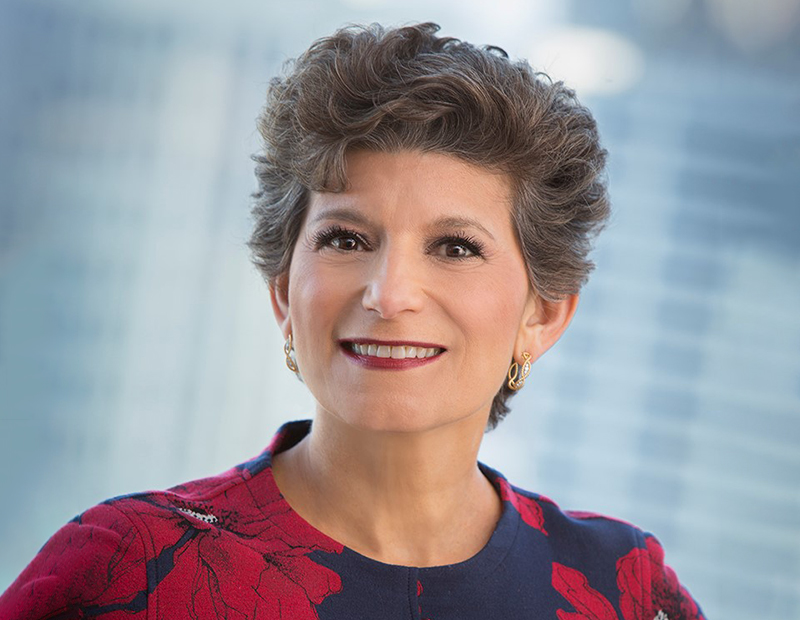
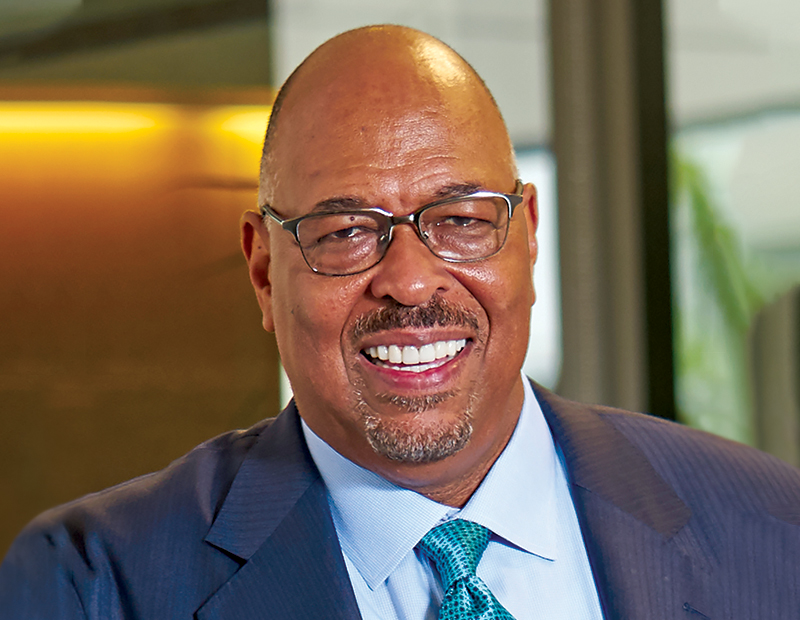
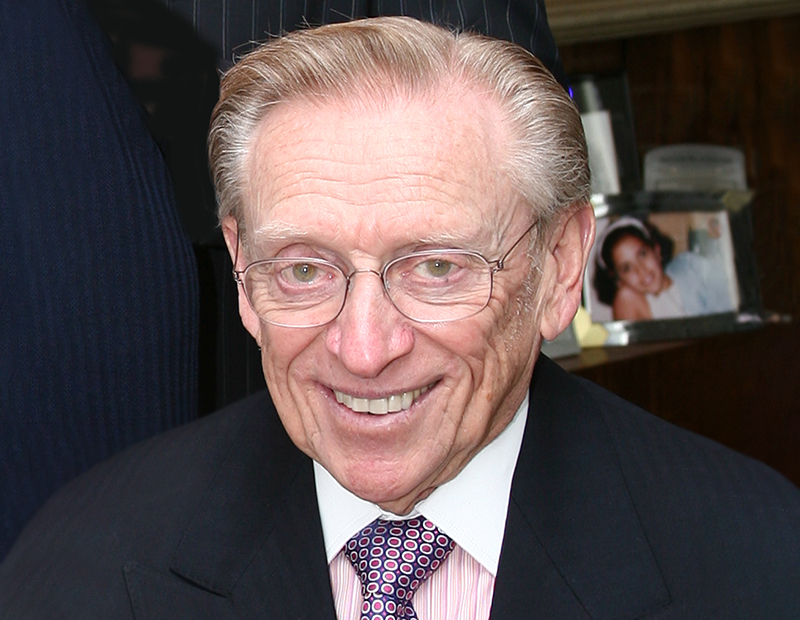

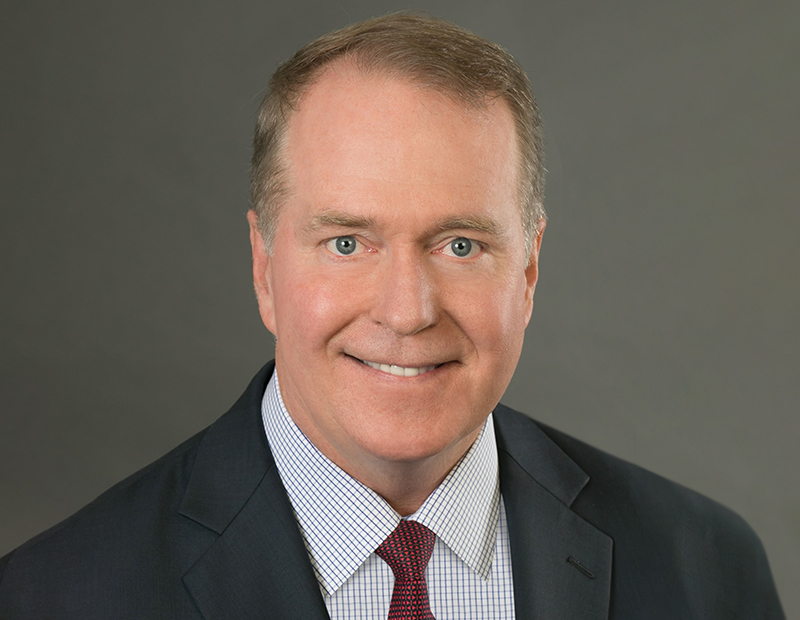
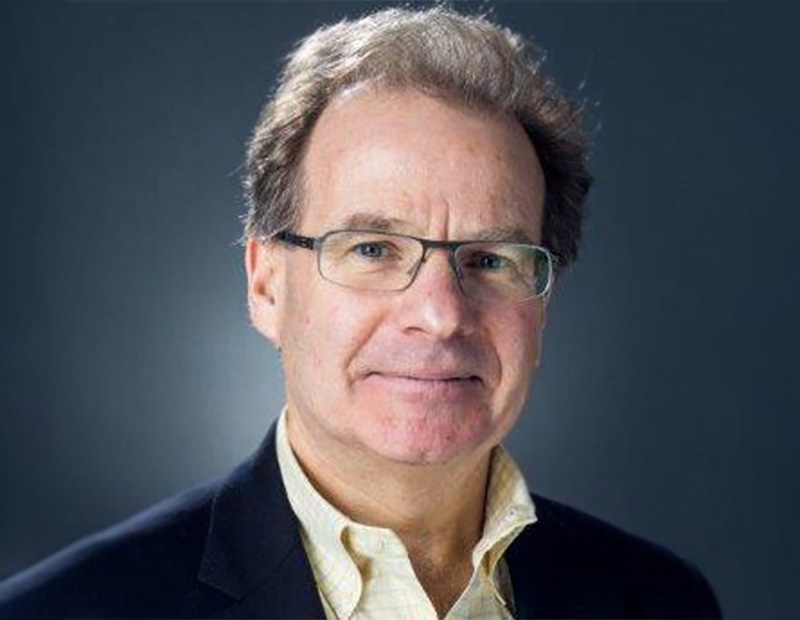
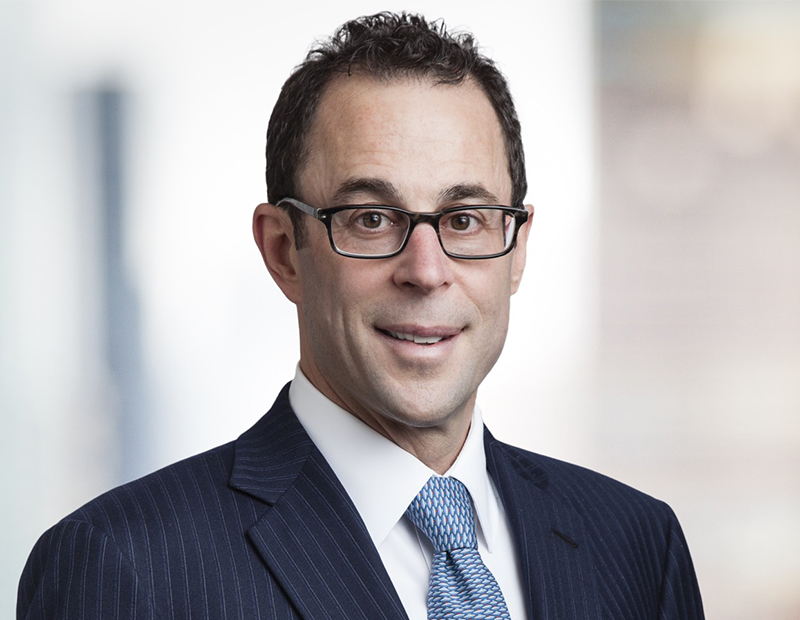
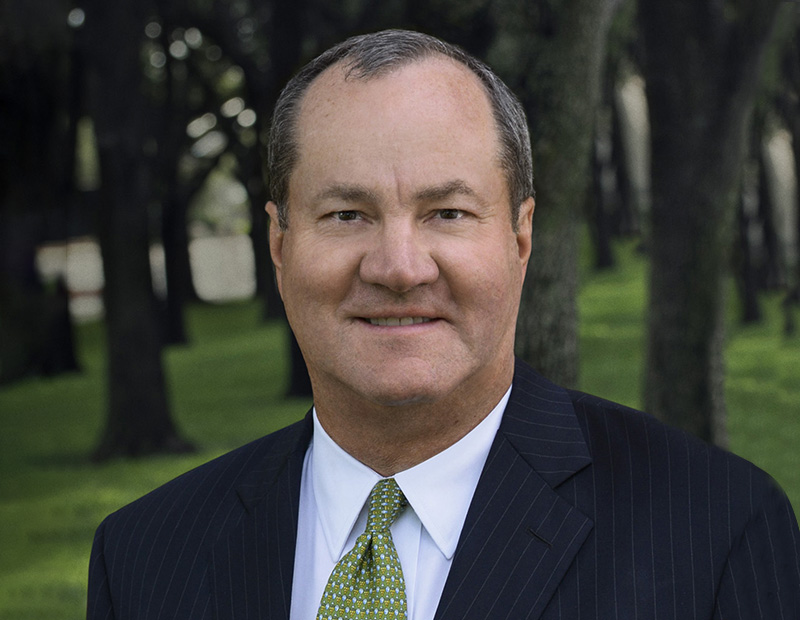
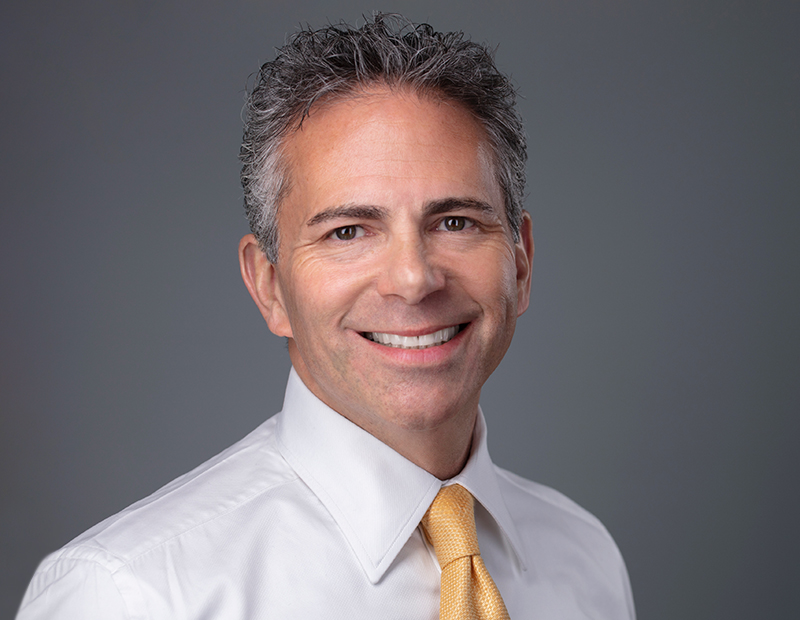
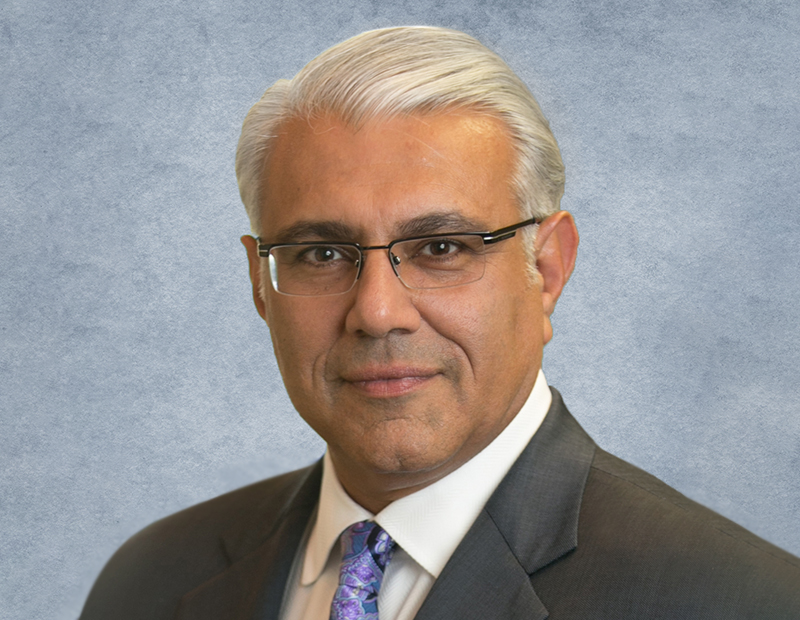
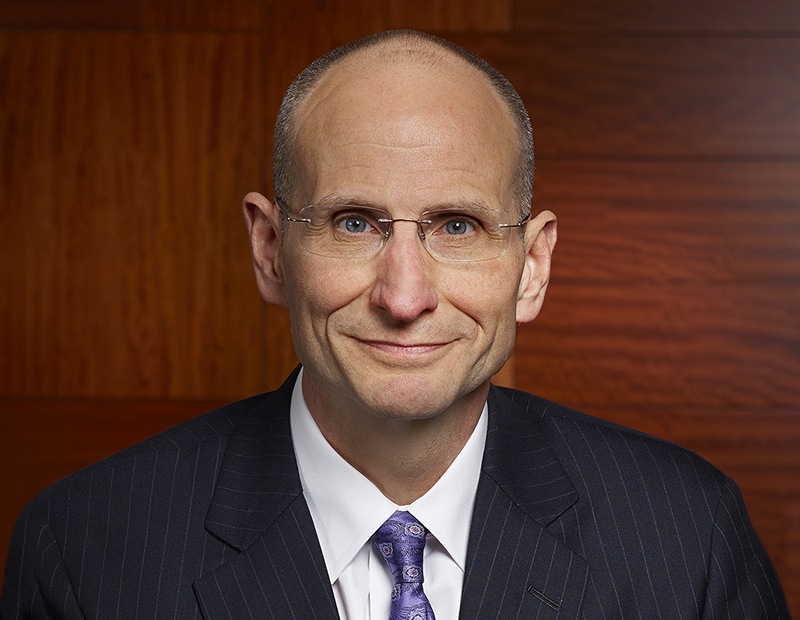
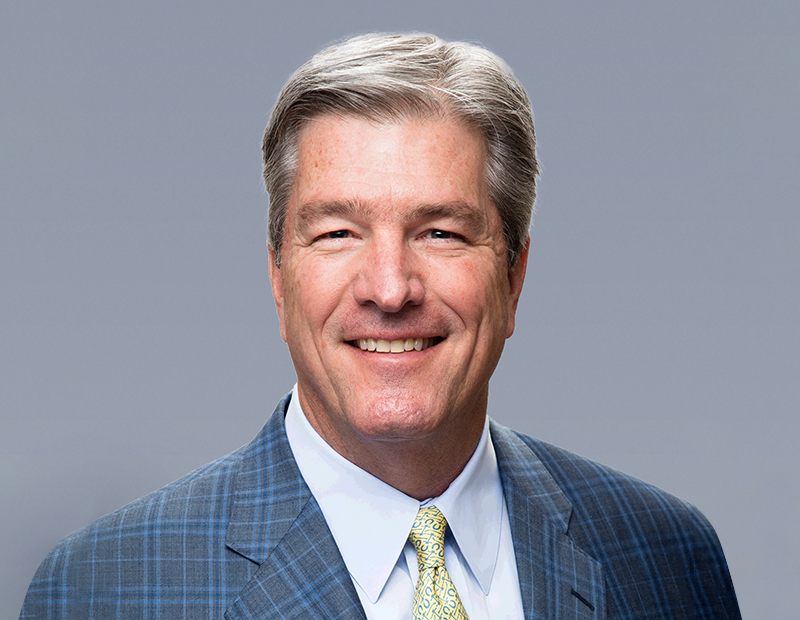
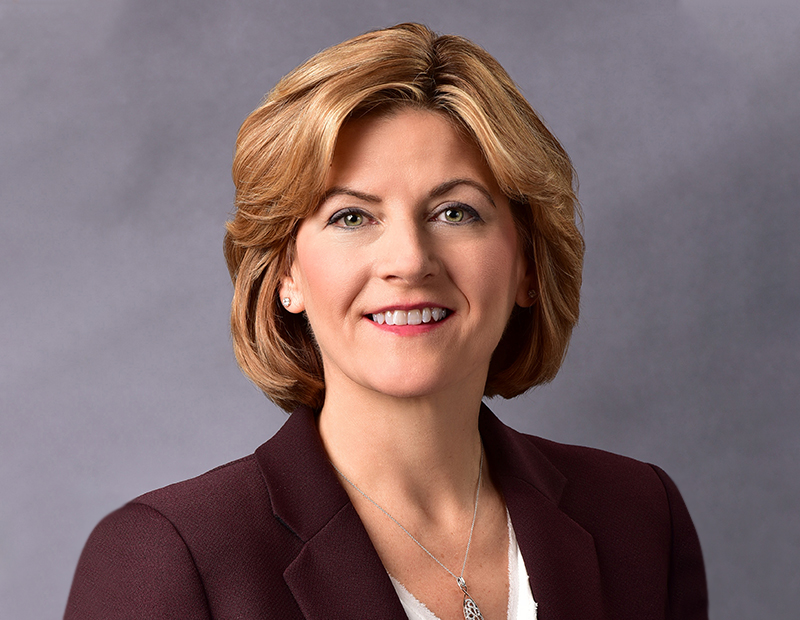
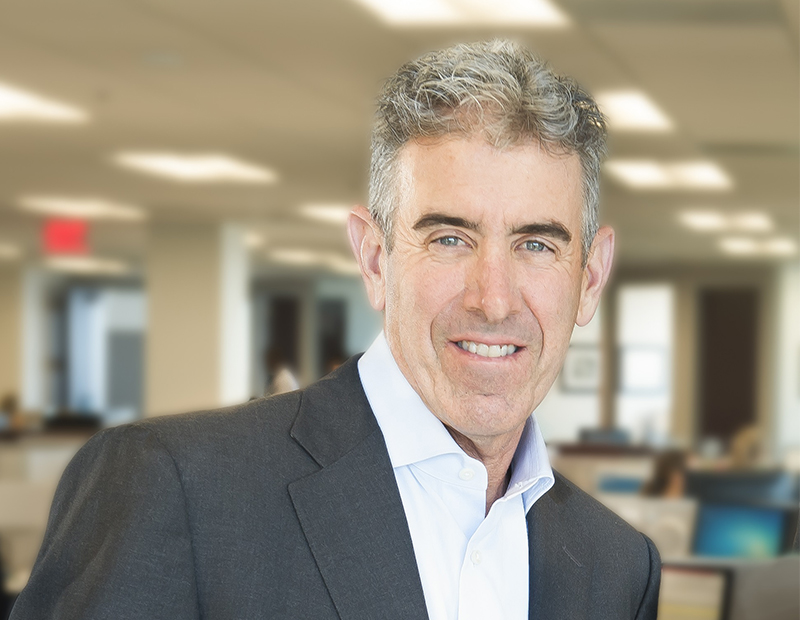
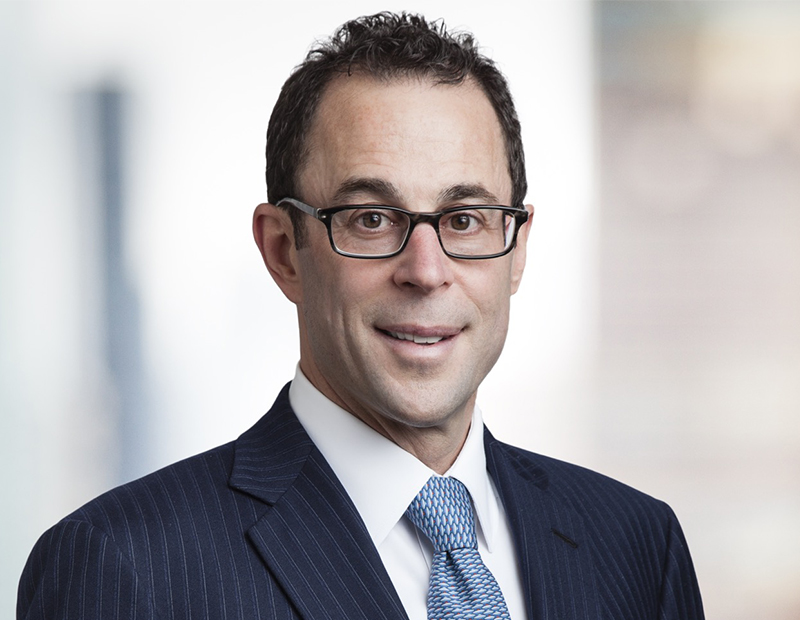
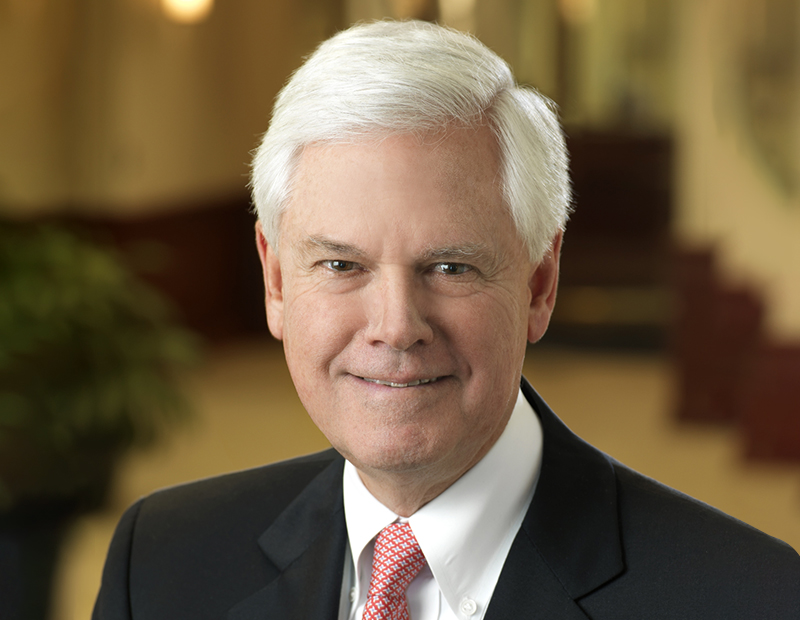
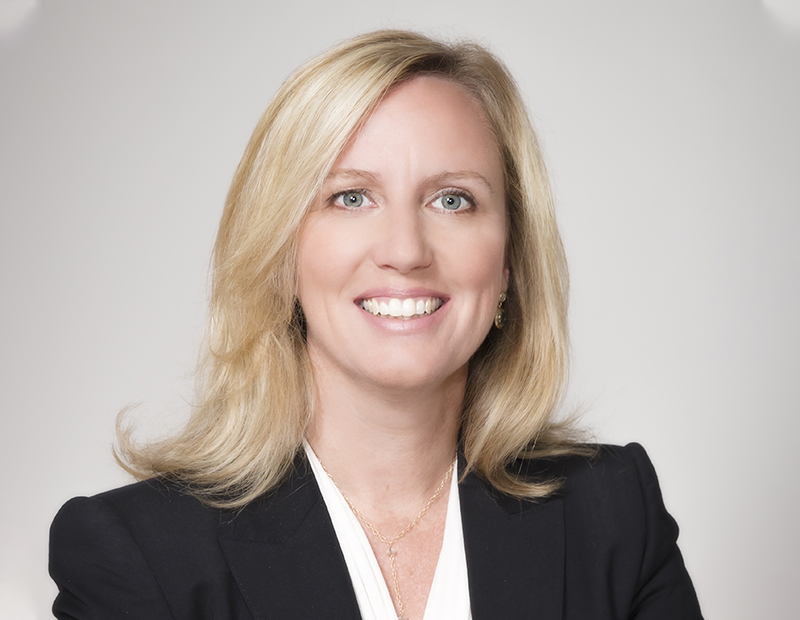
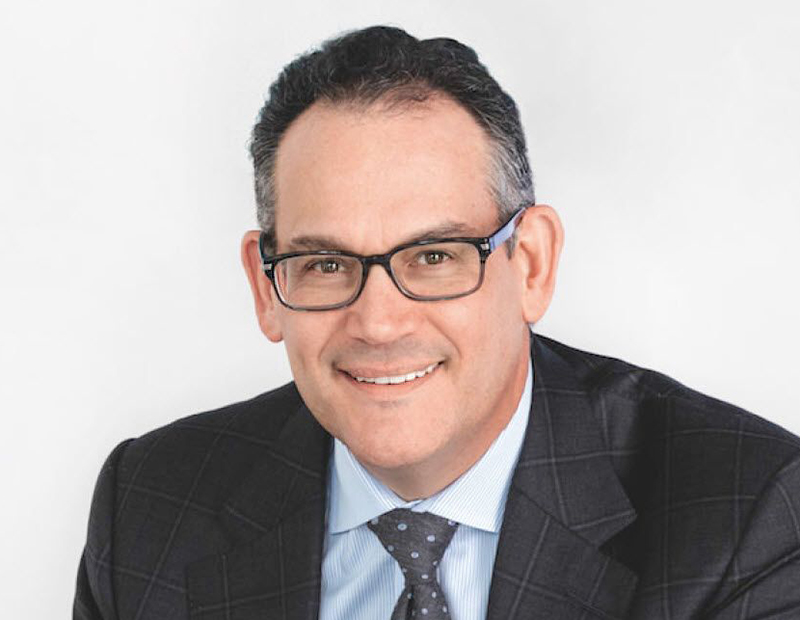
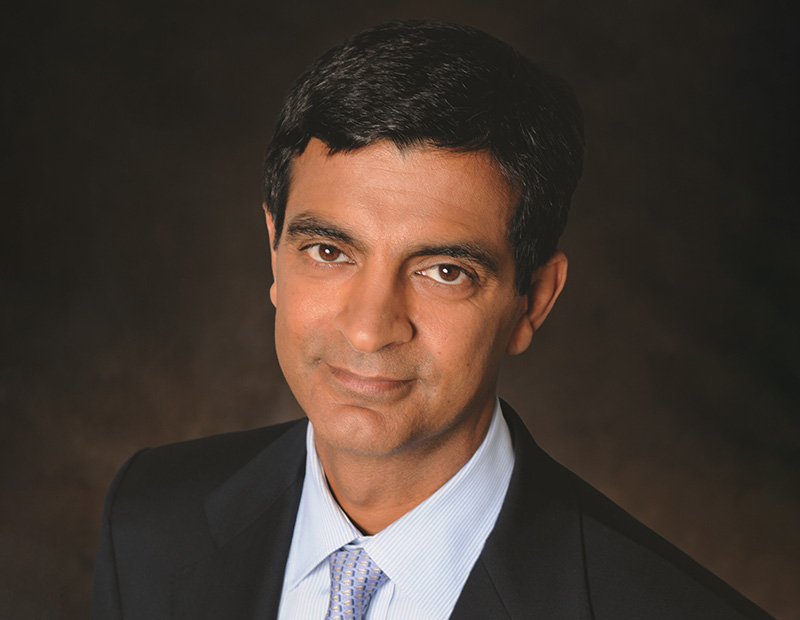
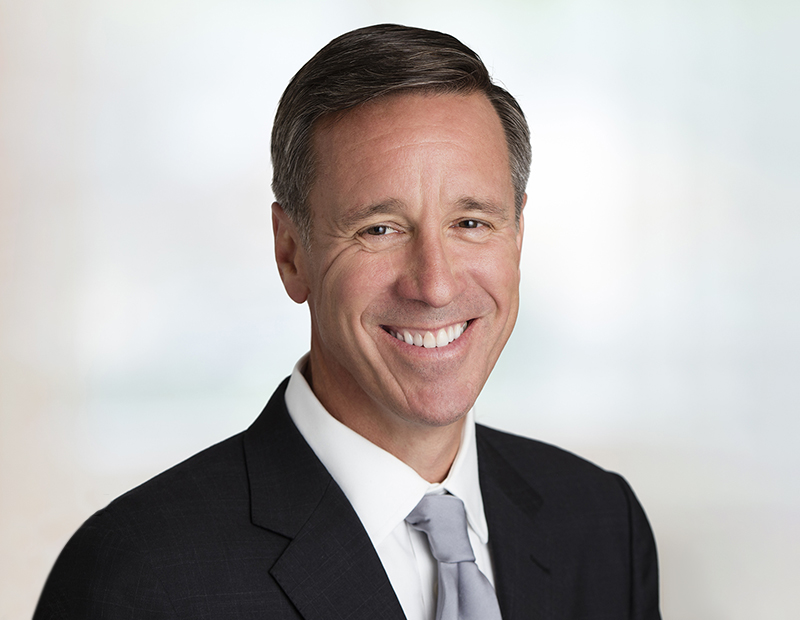
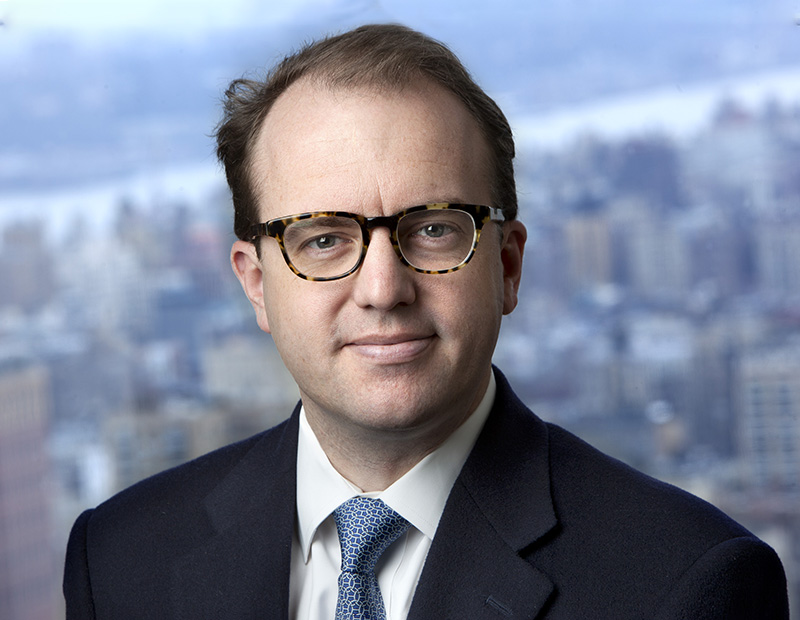
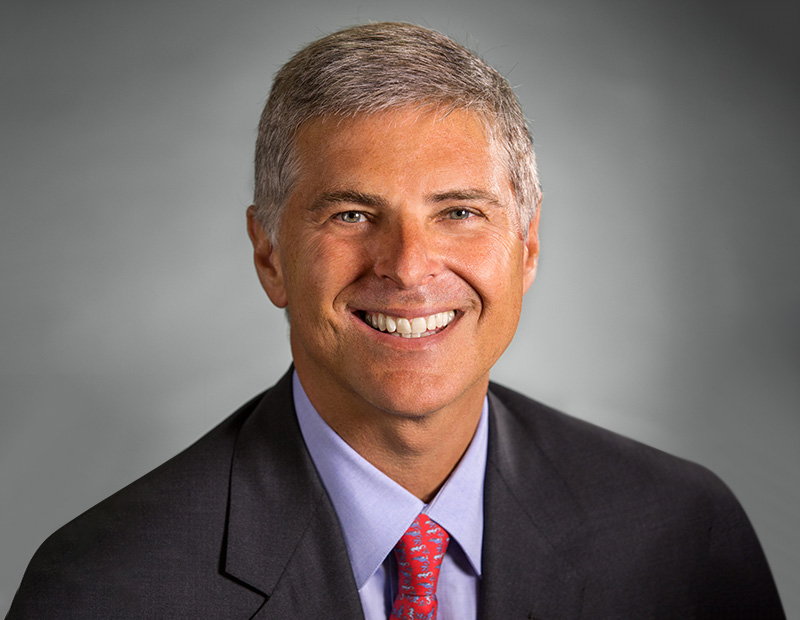
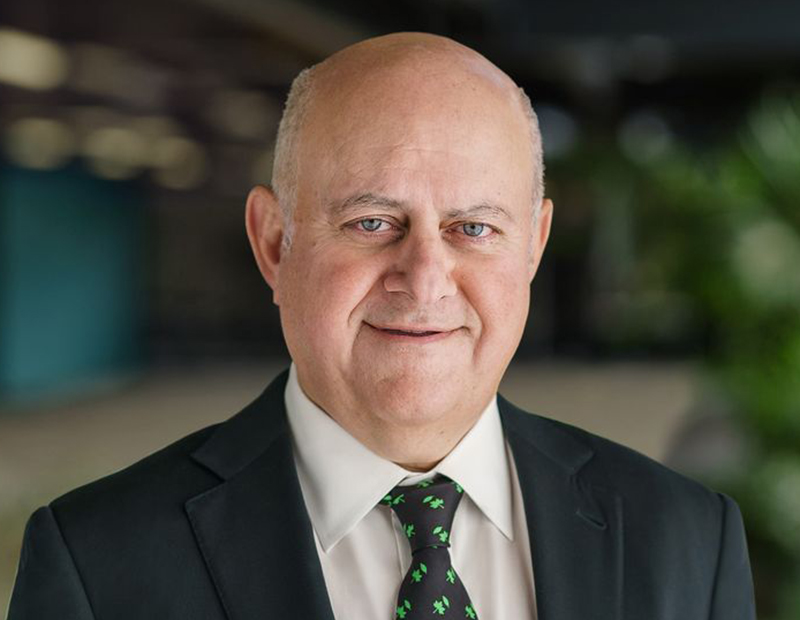

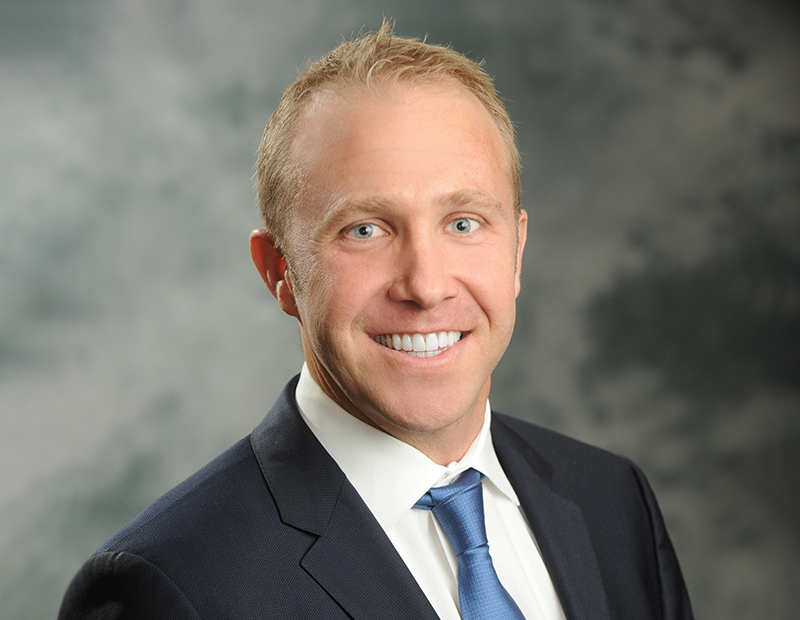
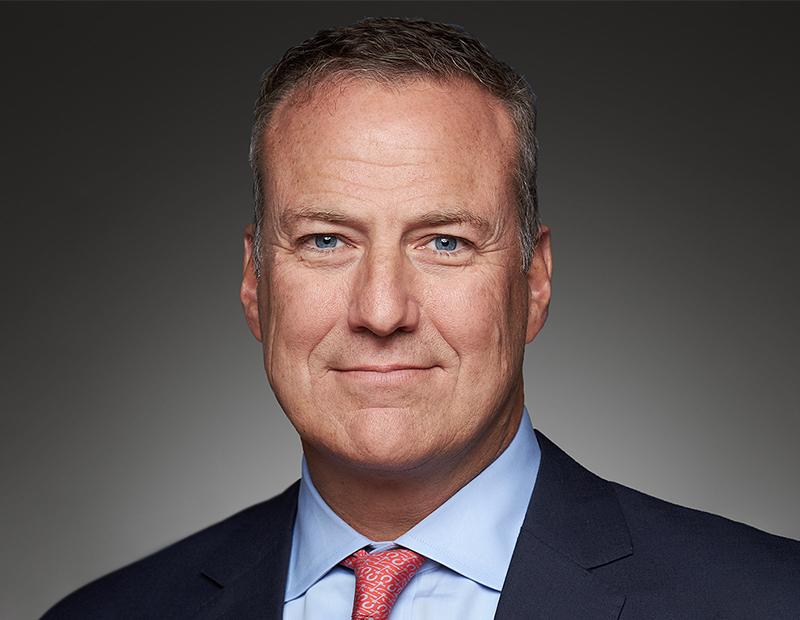
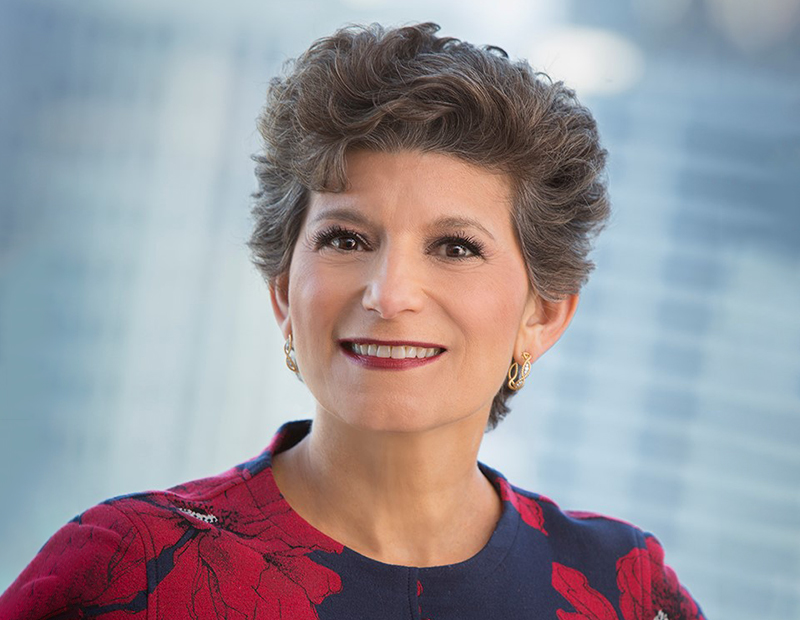
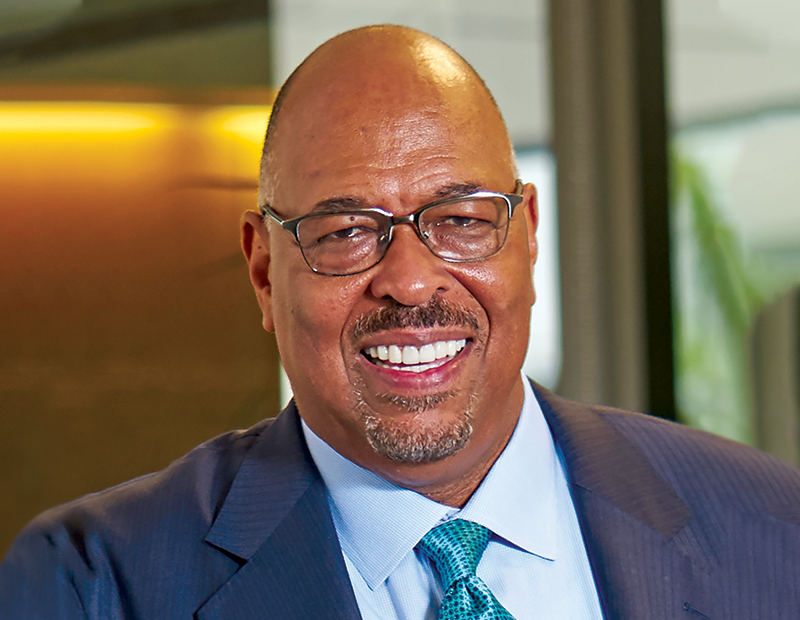






You must be logged in to post a comment.